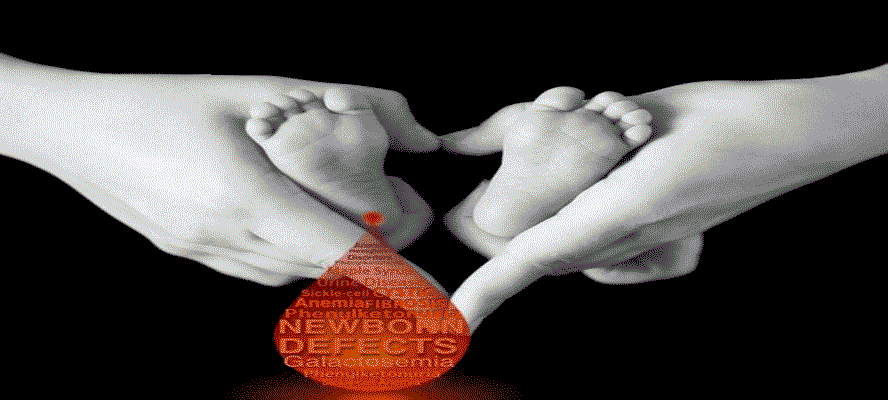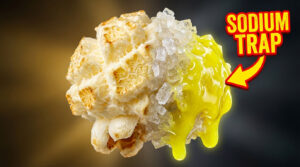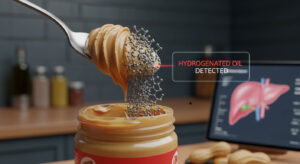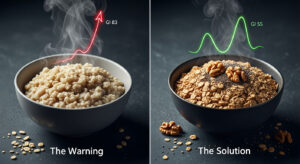A shortcoming detected at birth of a neonate/newborn is termed as birth defect. Clinically termed as congenital abnormalities or congenital anomalies, these occur due to errors in development. Congenital anomalies include a wide range of structural and functional abnormalities that can occur in isolation or as a group of defects in neonates. According to World Health Organization (WHO) and March of Dimes (MOD) report, these defects account for 7% of neonatal mortality.
In the Indian scenario, birth defect prevalence varies from 61 to 69.9 per 1000 live births, and the risk factors include:
- Universality as a concept of marriage (Participation is a compulsion)
- Unplanned pregnancies
- Poor information on antenatal care
- Poor maternal nutritional status
- High rate of hemoglobinopathies
- Consanguineous marriage
The first largest democracy of the world ranks second in the statistics for number of infants born annually with birth defects. Low birth weight has been documented to be the cause of high rates of newborn death, and under-five mortality rate continues to trend on the higher side. The Indian Newborn Action Plan (INAP) started in the year 2014 was initiated with a focus to eliminate preventable newborn deaths and stillbirths. The plan is to attain ‘Single-digit Neonatal mortality rate by 2020’ and ‘Single-digit stillbirth rate by 2020’. It combines approaches for prevention and care of a newborn with birth defects into primary health care, and emphasizes on maternal and child health
The present article provides the readers with general information on types, causes, and preventive strategies for birth defects as well as the prenatal screening choices.
Types of Birth Defects
Based on the mechanism of pathogenicity, birth defects can
broadly be classified under the following categories:
- Deformation: Abnormalities that arise from an aberrant mechanical force resulting in distortion of a normally developing structure is termed as deformation. Abnormality can be of a shape, form or position of body part, resulting in loss of body symmetry and fetal movement. The causative force is usually external and very rarely internal. Talipes deformities (club foot), plagiocephaly and developmental dysplasia of hip are some of the examples.
- Disruption: This defect results from destructive processes such as tissue breakdown or injury that alters normally formed structure leading to loss or division of body parts, the abnormal fusion of body part or alteration in shape. Terminal transverse defects of ring, index and middle fingers due to amniotic bands is a prime example of birth defect due to disruption event.
- Malformation: Defect that result due to failure or inadequate completion of developmental processes is called malformation. These inherited anomalies may be limited to a local region of a single organ, also called single system defect (eg. Cleft lip and palate, spinal bifida and congenital defect) or may appear as a syndrome wherein several abnormalities manifest simultaneously (eg. Down syndrome, Turner syndrome).
- Dysplasia: These result from abnormal cellular organization or function within a specific tissue type throughout the body, resulting in structural changes. These include metabolic disorders such as storage disease, skeletal dysplasia, ectodermal dysplasia. Radial dysplasia involves an under development or absence of radial or thumb side of the forearm and is potentially disfiguring. It can physically manifest as slightly small or missing thumb, missing radial wrist bones or the entire radius bone. It can range from mild to severe and affects the forearm, thumb or wrist or all in some cases.
Causes of Birth Defects
Birth defect results from a variety of factors, but every
factor does not attribute to a specific cause. There are
three major categories of causes:
Genetic birth defect:
Genetic factors account for 25% of all birth defects. Genetic
causes include chromosomal aberrations, single-gene disorder,
and multi-factorial disorders.
Chromosomal Abnormalities
(CA)-CA may arise due to non-hereditary losses or rearrangement
of genetic material or inherited from a parent with the same
chromosomal aberration. These include:
Numerical abnormalities, which result due to nondisjunction
during cell division which comprises of:
- Autosomal aneuploidy such as Down syndrome (Trisomy 21), Edward syndrome (Trisomy 18), Patau syndrome (Trisomy 13)
- Sex chromosomal aneuploidy such as Klinefelter syndrome (47, XXY karyotype), Triple X (47, XXX karyotype), Turner syndrome (45, X karyotype)
- Extra Structurally Abnormal Chromosome (ESAC), also known as marker chromosome can be from any of the autosomes or sex chromosomes. Pallister-Killian (extra isochromosome 12p) is one of the examples associated with ESAC.
- Polyploidy, arises due to the presence of more than two complete sets of haploid chromosome complement Hydrocephalus, cleft lip/ palate, congenital heart diseases are some of the examples of birth detects seen in the fetus with triploidy.
Structural abnormalities arise due to a part of chromosome either being deleted or duplicated. It includes:
- Deletions and microdeletions such as DiGeorge syndrome and Pierre-Robin sequence
- Duplication and micro-duplications such as Trisomy 9p syndrome and 22q11 micro-duplication syndrome
- Chromosomal rearrangements such as translocations, inversion, and insertions
- Other structural abnormalities such as isochromosome composed of either two long or short arms joined at centromere) or ring chromosome (deletion of distal regions of short and long arm of chromosome with the fusion of arms)
Single gene mutation – This approximately accounts for 6% of the birth defects, caused by a variant in one of the genes in every cell of the body. It mostly constitutes of malformations or dysplasia affecting multiple systems. Based on the mode of inheritance, it can be classified as autosomal recessive or dominant or as X-linked recessive or dominant. The popular ones include:
- Thalassemia– An inherited hemoglobin disorder, in which the production of hemoglobin is deficient due to mutations in genes that synthesize a and ?? globin chain of hemoglobin.
- Sickel cell anemia– An inherited hemoglobinopathy caused by an A-T point mutation in codon 6 of the betaglobin gene resulting in abnormal Hemoglobin S (HbS). This hemoglobin molecule polymerizes in the deoxygenated state, causing physical deformation or sickling of red blood cells.
- Glucose-6-phosphate dehydrogenase deficiency. The most common enzyme deficiency which arises due to recessive X-linked mutation in the gene responsible for enzyme glucose 6 phosphate dehydrogenase (G6PD). Newborn affected with this syndrome develop severe hemolytic jaundice and kernicterus, resulting in death or serious neurologic impairment.
- Cystic Fibrosis (CF)– A single-gene autosomal recessive disorder caused by mutation in Cystic Fibrosis Membrane Conductance Regulator (CFTR) protein. Characterized by chronic pulmonary disease, pancreatic deficiency, gastrointestinal dysfunction, abnormally high levels of electrolytes in sweat and occasionally by biliary cirrhosis.
- Phenyl ketonuria– An autosomal recessive disorder that causes congenital absence of phenylalanine hydroxylase, resulting in phenylalanine accumulation in blood and impairment of early neuronal development.
- Hemophilia A and B- X-linked disorder cause deficiency of coagulation factor VIII and IX respectively. Characterized by subcutaneous and intramuscular hemorrhages, bleeding from gums, lips, hematuria.
Environmental birth defect:
Exposure of developing embryo to a teratogen can be
partially or completely responsible for some birth defects.
Effect of exposure depends on factors such as timing of
exposure concerning the stage of development, dose
levels and genetic susceptibility. The encounter may
be from the maternal environment or an external agent.
Environmental factors have been detected to be responsible
for approximately 10% of congenital anomalies. The major
teratogens include following agents:
Drugs/ Medication
- Alcohol associated with Fetal Alcohol Syndrome (FAS) and Alcohol-Related Neuro-Developmental Disorder (ARND) resulting in alterations in facial features and fetal growth reduction, as well as behavioral and cognitive effects.
- Anticonvulsant drugs such as phenobarbital, sodium valproate, phenytoin, and carbamazepine cause major malformations such as Neural Tube Defects (NTDs), microcephaly and growth restriction.
- Misoprostol used for cervical ripening, induction of labor and early abortion also leads to several birth defects in the skull and limbs, caused by vascular disruption.
Examples of congenital infections that can result in fetal birth defects include:
- Rubella viral infection- Interferes with organ development of the fetus, causing blindness, deafness, cardiovascular anomalies, and mental retardation, also collectively known as Congenital Rubella Syndrome (CRS).
- Cytomegalovirus infected infants are mostly asymptomatic at birth but at a risk of developing severe abnormalities associated with damage to the Central Nervous System (CNS) or sensory organs.
- Herpes Simplex Virus (HSV) infection in neonatal is a life-threatening illness involving CNS diseases such as microcephaly, hydranencephaly, and meningoencephalitis.
Maternal factors. Some maternal illnesses can result in birth defects in neonates, if poorly controlled. These include:
- Insulin-dependent diabetes mellitus. Risk of congenital anomalies (diabetic embryopathy) like CNS, cardiovascular, renal anomalies and limb defects.
- Phenylketonuria- Risk of infant with congenital malformation and neurological impairment.
- Hyperthermia- Increases the risk of NTDs and other birth defects.
Maternal nutrients- Deficiency in nutrients in the pregnant mother increases the risk of birth defects. These include:
- Folic acid deficiency- Predominant cause of NTDs (spina bifida, anencephaly, and encephalocele)
- lodine deficiency disorder- Affects fetus during the second trimester of pregnancy resulting in endemic cretinism, endemic goiter, and reduced intellectual ability.
Environmental pollutants. Common teratogens include heavy metals such as mercury, lead, and pesticides such as DDT (Dichloro Diphenyl Trichloroethane), that causes defects in CNS, growth retardation and increases risk of abortion.
Ionizing Radiation- Effect of prenatal exposure to ionizing radiation depends on gestation age at exposure and dose of radiation absorbed by the fetus. Exposure to radiation between 8 to 15″ week of gestation can damage the developing brain.
Birth defect of complex and unknown origin: Popularly termed as multi-factorial birth defect, it is caused due to the additive effect of genetic and environmental factors. These are usually limited to a single organ system and include the following:
Neural Tube Defect- Encloses a range of congenital malformations from underdeveloped brain and spinal cord including their protective coverings. Mutations in the Methylenetetrahydrofolate Reductase (MTHFR) gene and reduced intake/absence of a folate-rich diet have been associated with increased risk of NTDs. Thus, pre-conception folate supplements have been recommended as a must in early pregnancy. There are three types of NTDS:
- Spina bifida- It is incomplete closure of the neural tube. The obstructed development of spinal cord manifests in the first 4-5 weeks of fetal development and results in hydrocephalus, paralysis, incontinence or skeletal deformities depending on the location and nature of the defect.
- Anencephaly. It is congenital absence of the cranial vault producing characteristic bulging of the eyes and absence of the neck.
- Encephalocele. It is characterized by protrusion of the brain and its covering membranes through the skull.
Congenital Heart Disease – This is the most common birth defect which results in cyanosis, pulmonary hypertension and growth retardation. Conditions such as maternal rubella infection, maternal diabetes, alcohol, chromosomal aneuploidy such as Down syndrome can result in congenital cardiac malformations.
Cleft lip/ Cleft palate- Caused due to a gap in between the oral soft palate and roof of the mouth, and sometimes extended to the upper lip. Affected neonates have difficulty with speech development, hearing, and tooth formation.
Talipes/ Club foot- Involves abnormalities in ankle joints, bones, muscles and ligaments of the foot. If untreated, it causes arthritis and can hinder the growth of the entire leg.
Prenatal Testing There are several approaches for assessing the growth and development of fetus in utero. Following screening/diagnostic options are recommended in routine as well as high-risk pregnancies to detect malformation, genetic abnormalities, assess overall fetal growth and complications during pregnancy.
This non-invasive techniques help in detection of structural anomalies in fetus by studying anatomical markers which include Ultrasonography, assessing Maternal serum markers and Non-invasive prenatal screening. Invasive confirmatory test involves Amniocentesis and Chorionic Villus Sampling (CVS).
Inference
Although progress has been made to identify the cause of birth defect,
it is important to accept that no cause can identify for a significant
proportion of birth defects. Knowledge of the pathway leading to a
birth defect can be a foundation for better primary prevention. It is
important to understand the role of preconception care to prevent
any congenital abnormalities.
Also, investigation of causes of birth defects at the time of diagnosis can aid in management and counseling of patients to avoid any anxiety and guilt.








